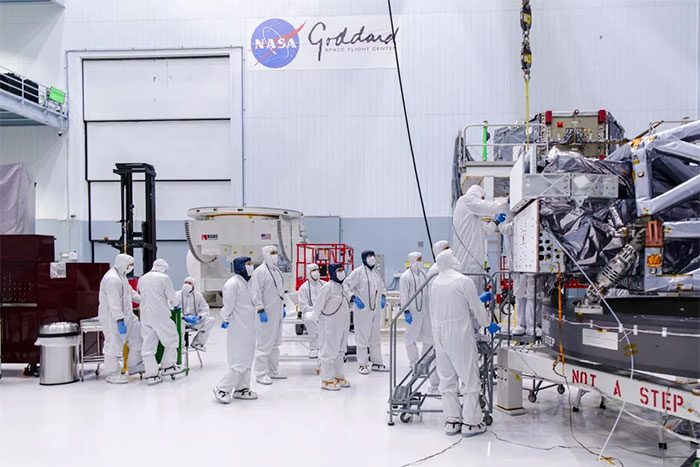The new equipment on NASA’s Nancy Grace Roman Space Telescope may help make the dream of finding Earth-like exoplanets a reality sooner than expected.
According to SciTech Daily, the team responsible for the Nancy Grace Roman mission has integrated the upgraded Roman Coronagraph into this space telescope, marking a significant milestone in exoplanet exploration technology.

Engineers at Goddard are integrating the new Roman Coronagraph into the Nancy Grace Roman Space Telescope – (Photo: NASA).
The Nancy Grace Roman Telescope is the most advanced telescope being developed by NASA at the Goddard Space Flight Center, scheduled for launch in May 2027.
This state-of-the-art cosmic observatory is named after astronomer Nancy Grace Roman (1925-2018), a pioneering scientist at NASA who played a crucial role in the development of telescopes.
Sometimes referred to simply as “Roman”, the name also evokes “Rome”, likening it to NASA’s “Roman warrior.”
According to NASA, the new Roman Coronagraph will play a vital role in enhancing the capability to directly observe exoplanets—planets outside our solar system—and search for potentially habitable worlds.
This device will feature a complex array of masks and mirrors designed to block the blinding light from the parent star of the target planets.
This will enable scientists to observe small planets that are close to their parent stars, which previous telescopes could not detect due to being “blinded.”
Most importantly, these could be Earth-like worlds.
Additionally, with advanced observation capabilities beyond earlier telescopes, the Nancy Grace Roman is expected to uncover more potential biosignatures from these worlds.
The Roman Coronagraph is also designed to serve as a technological stepping stone for identifying and cataloging targets that should be analyzed more closely by even more advanced telescopes in the future.
One of the future missions following the Nancy Grace Roman will be the “Habitable Worlds Observatory,” a telescope specifically designed to search for signs of extraterrestrial life.
The Roman Coronagraph is primarily developed by NASA’s Jet Propulsion Laboratory (JPL), with contributions from ESA, JAXA, CNES (the space agencies of Europe, Japan, and France), and the Max Planck Institute for Astronomy in Germany.




















































